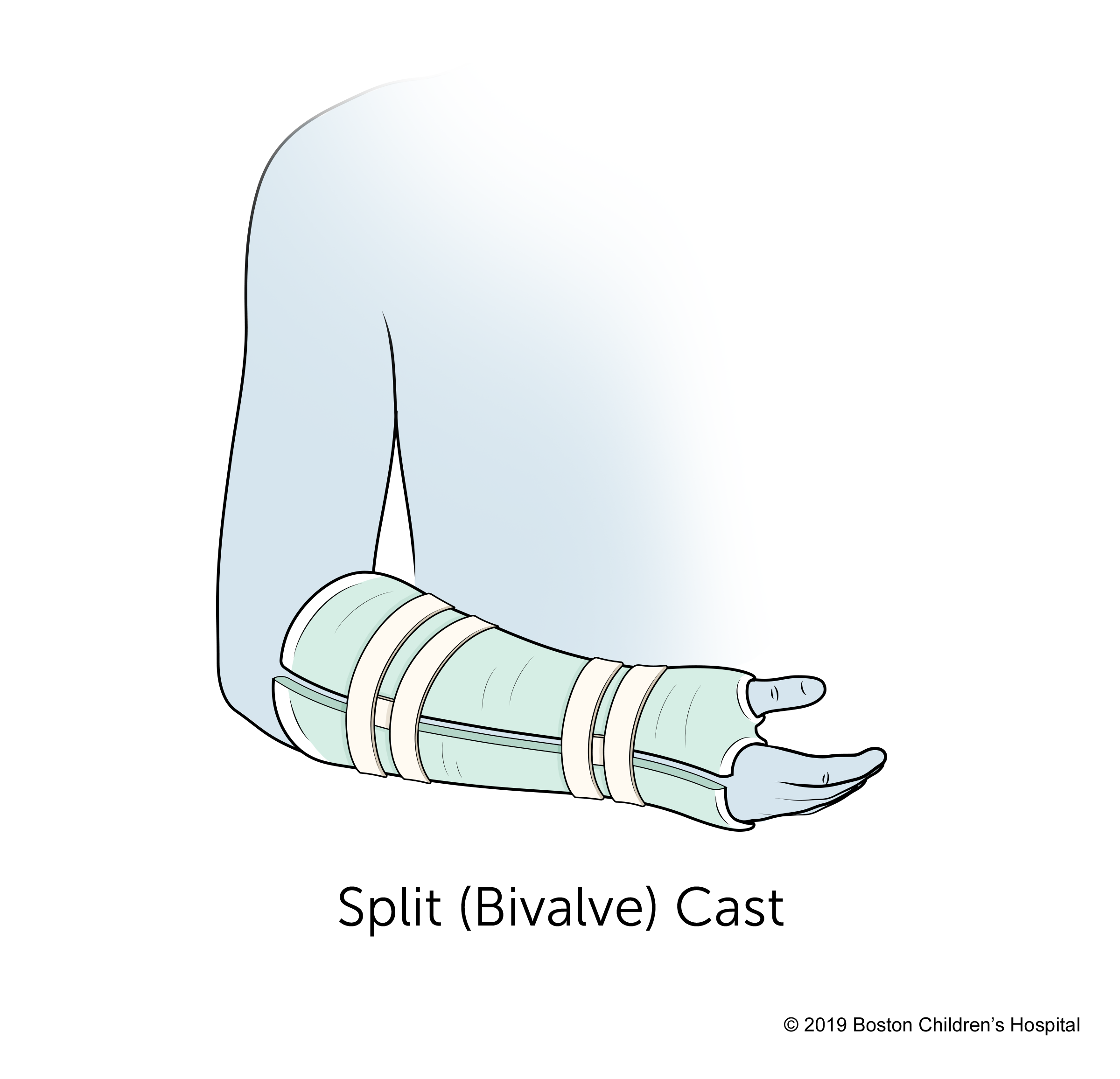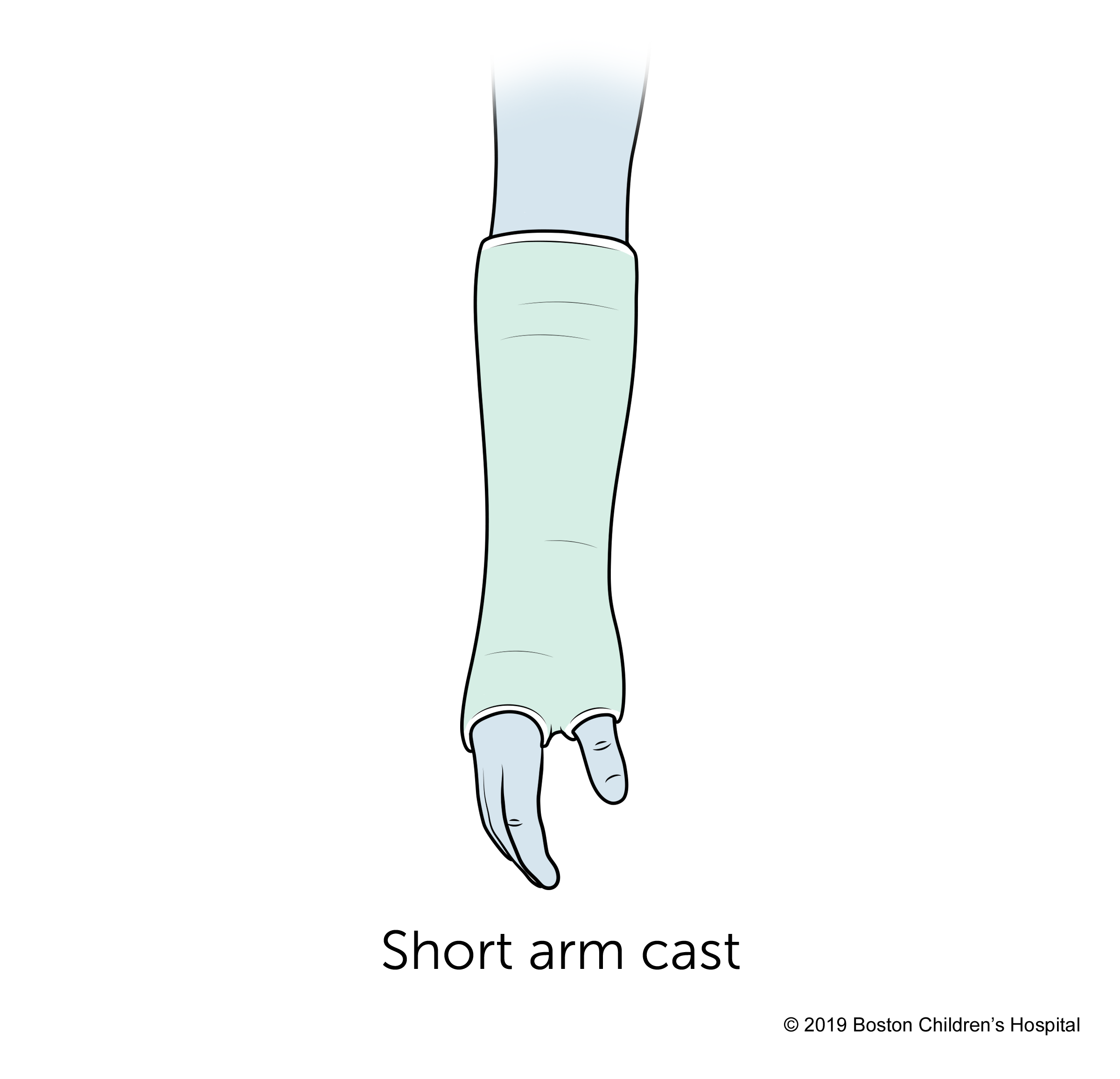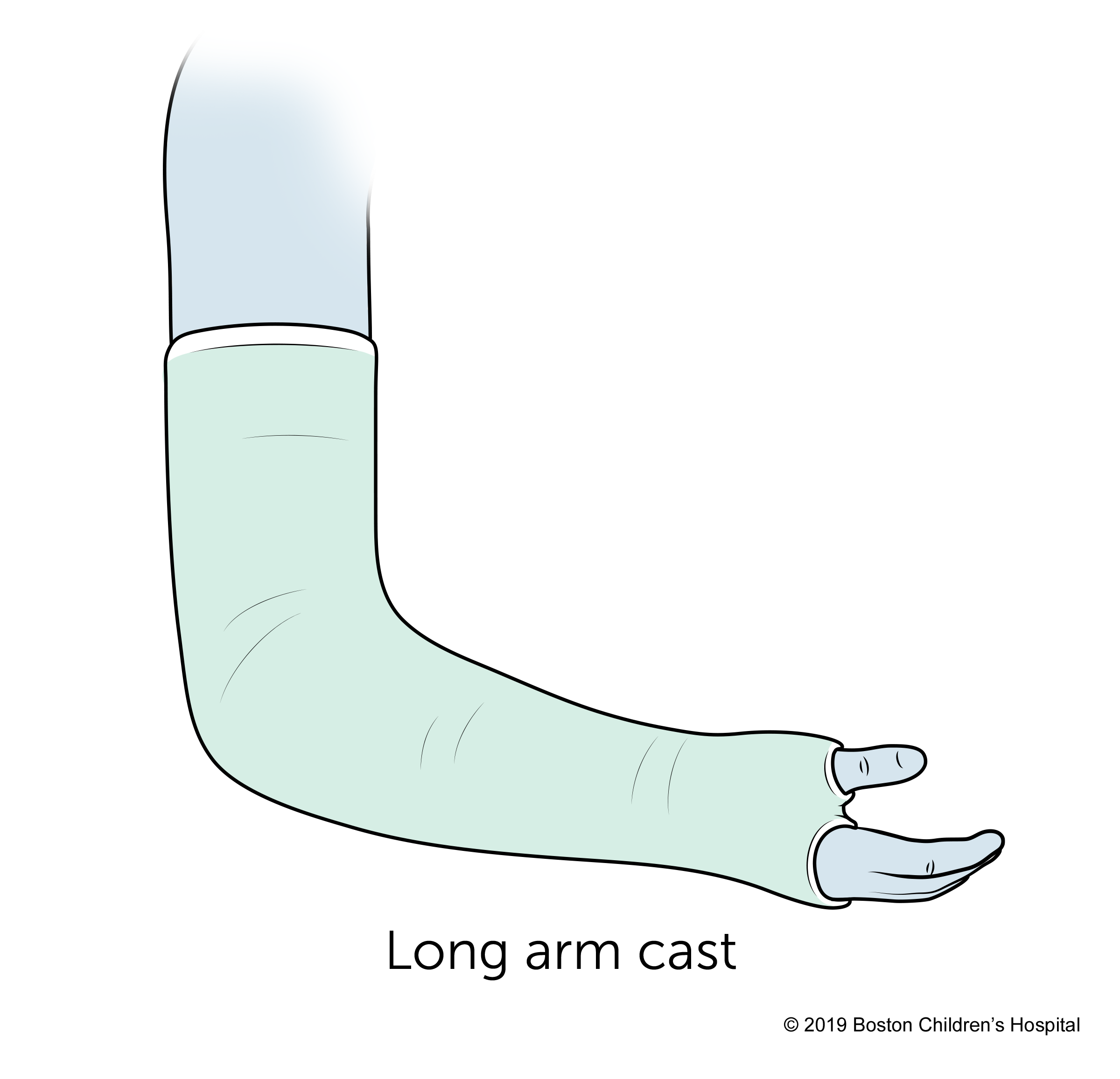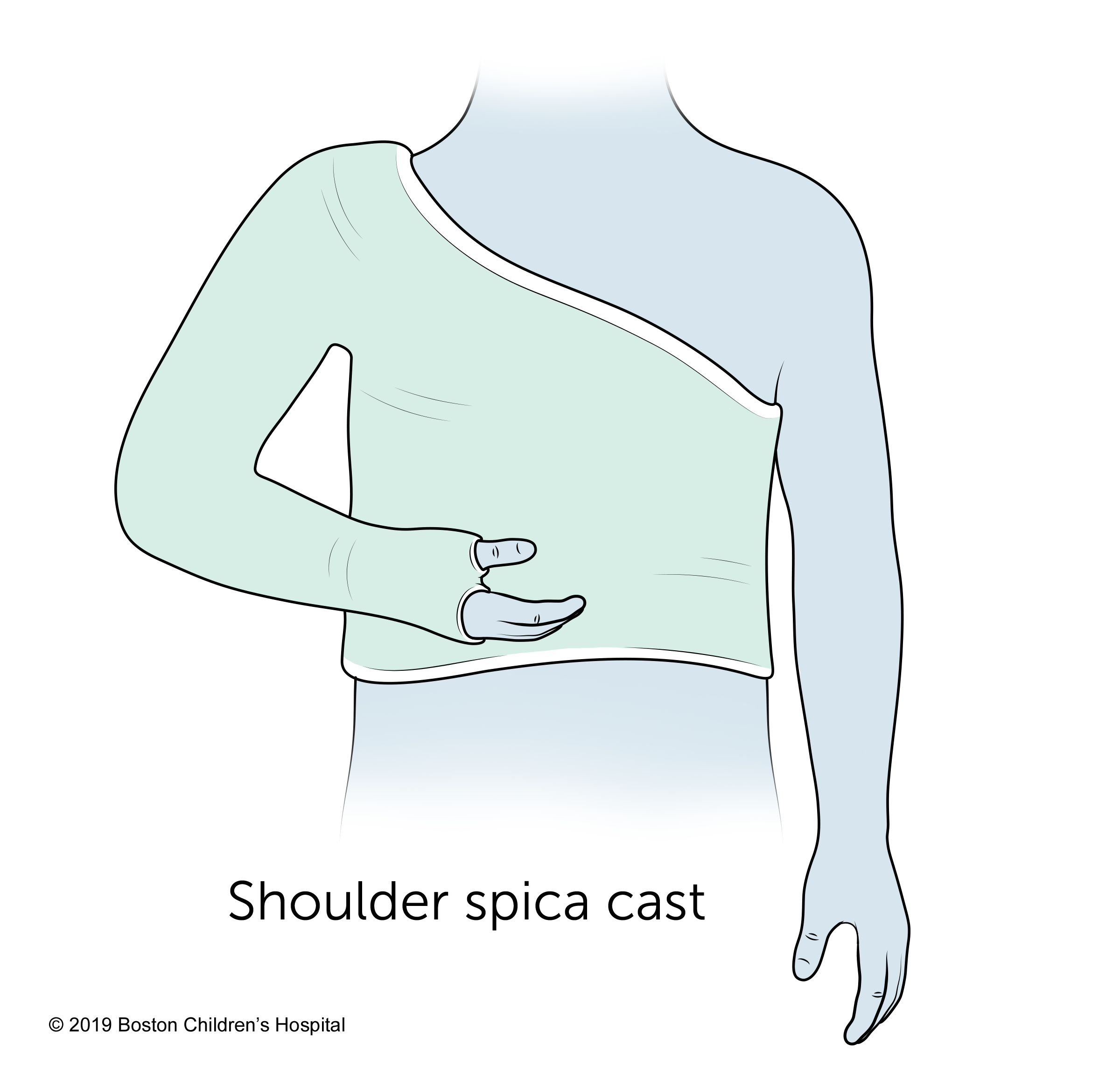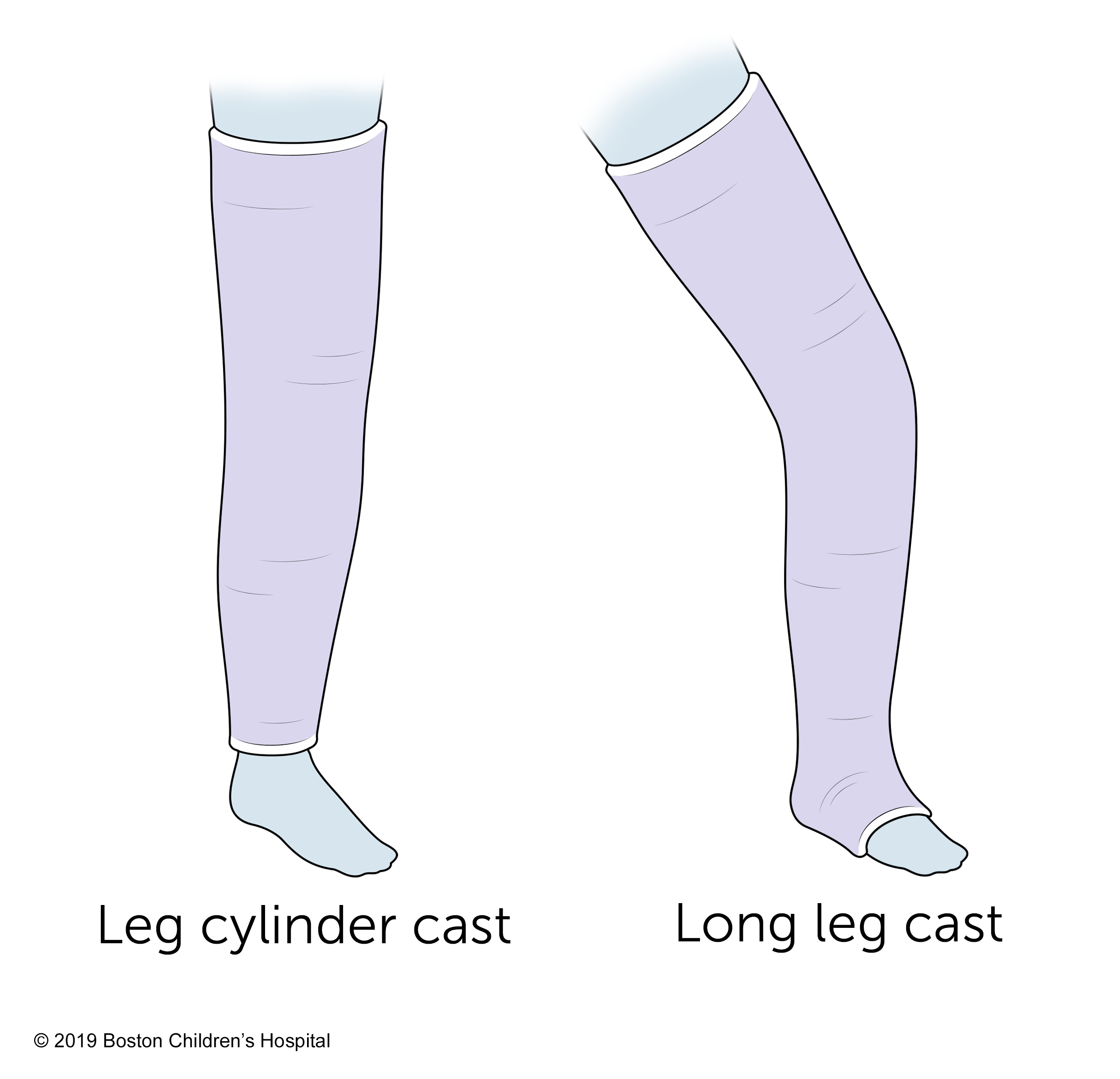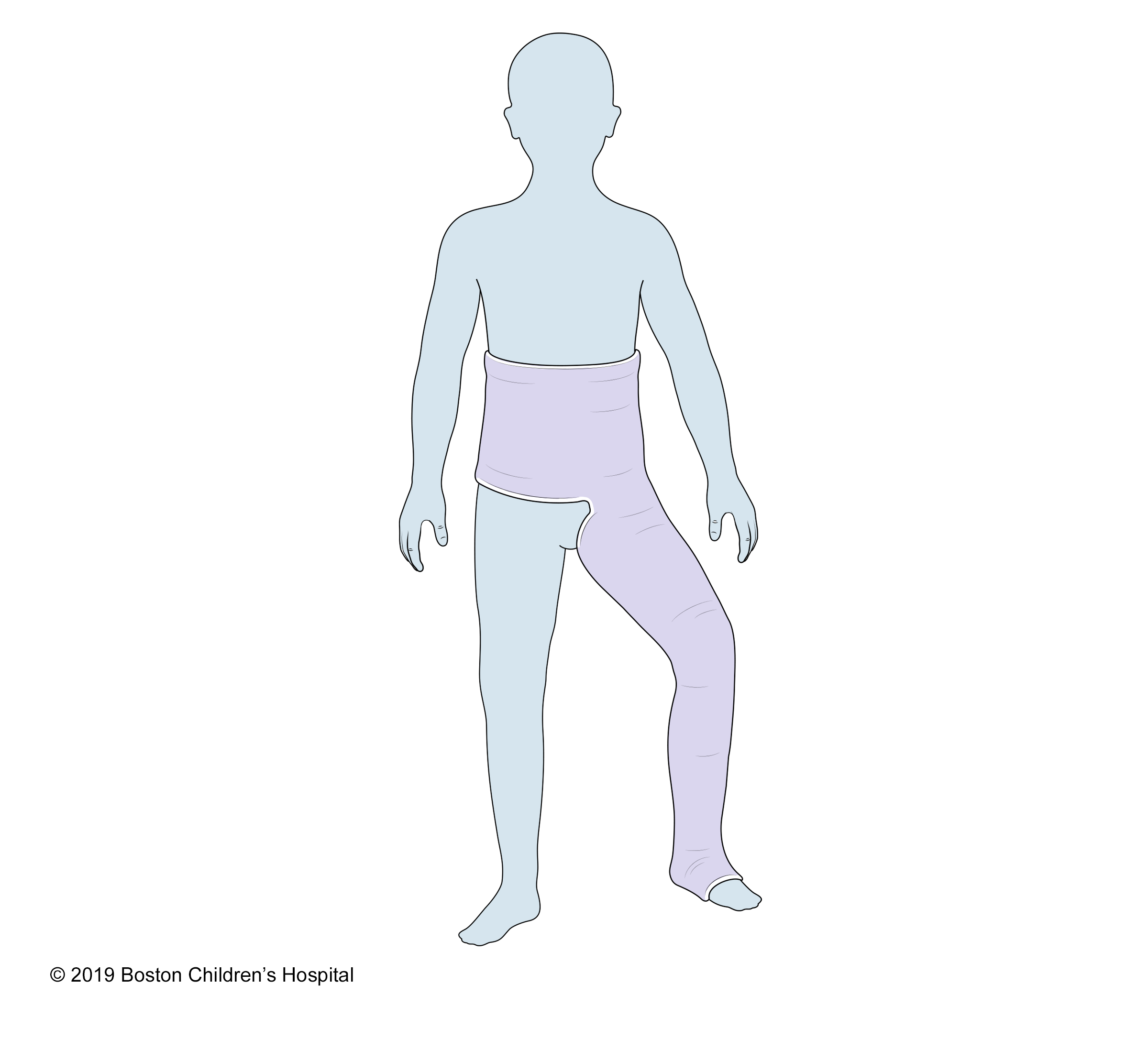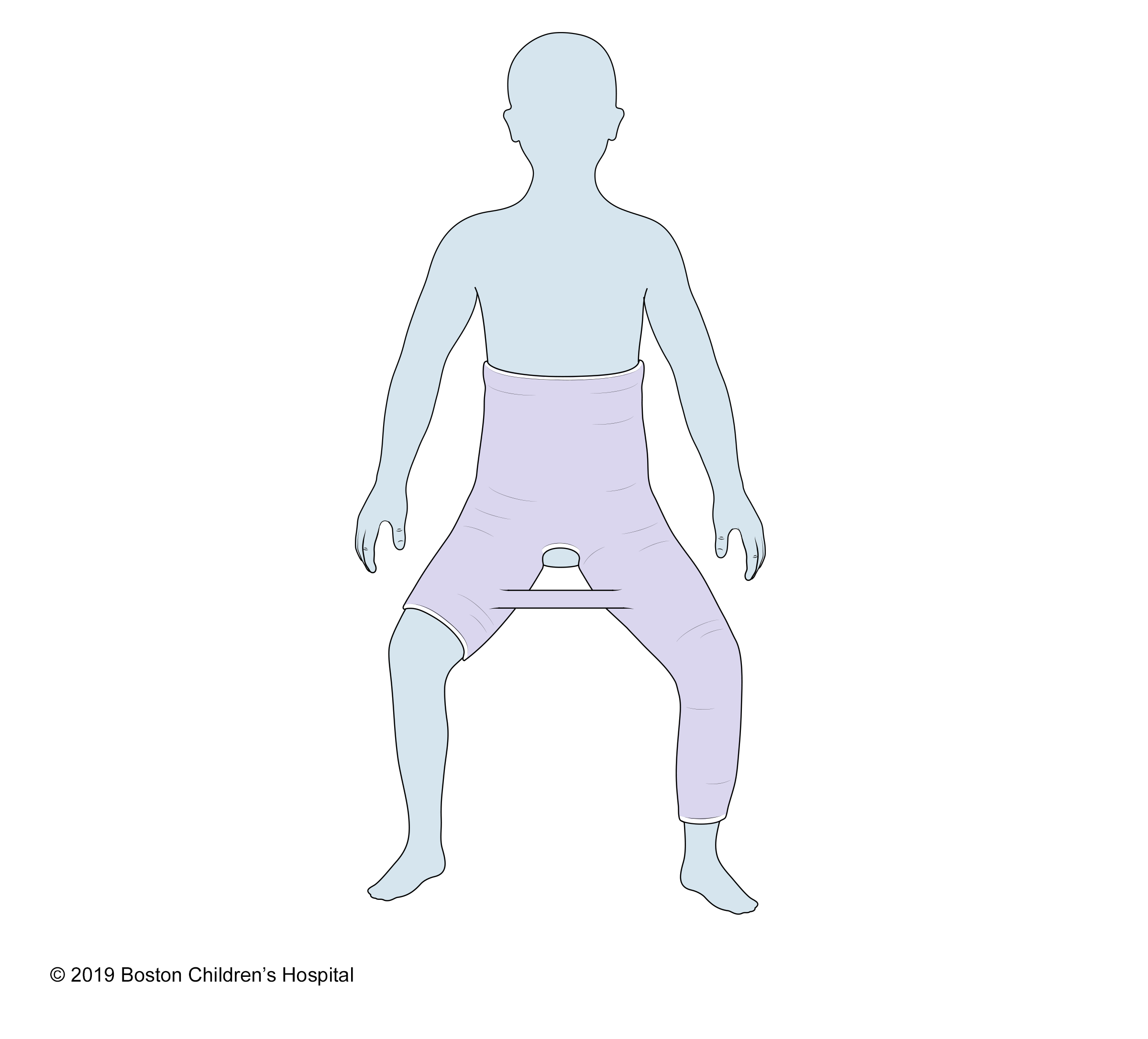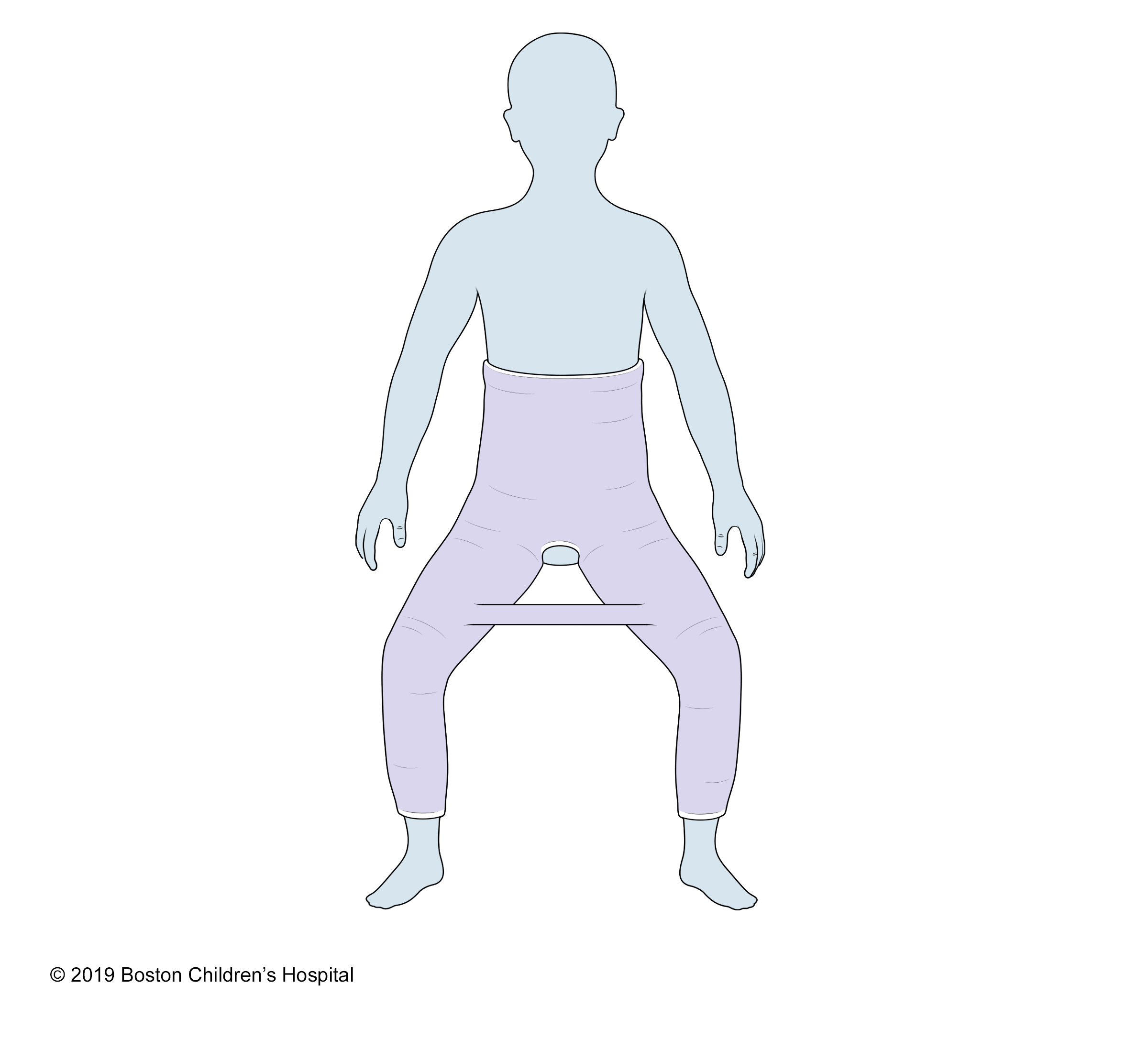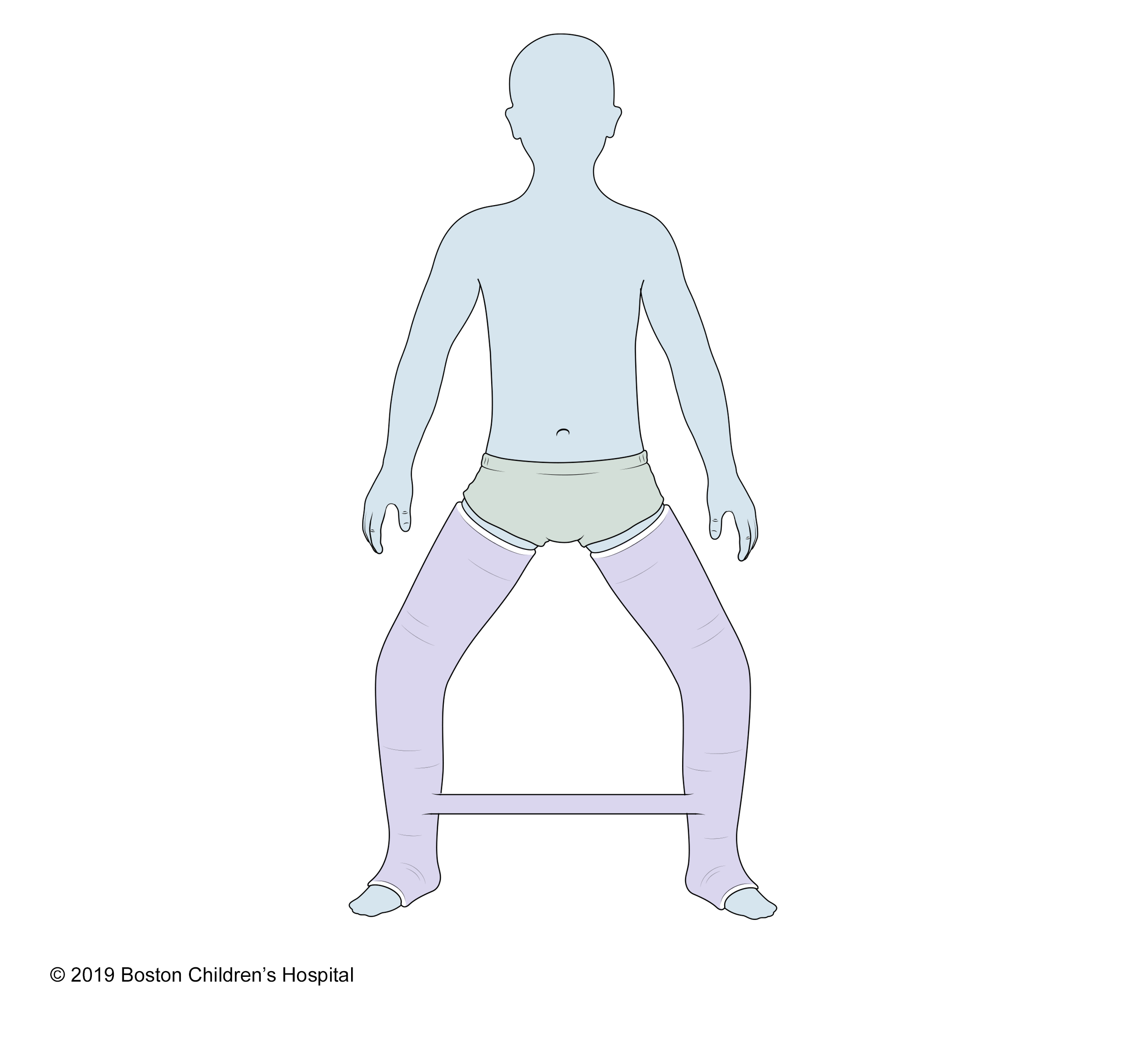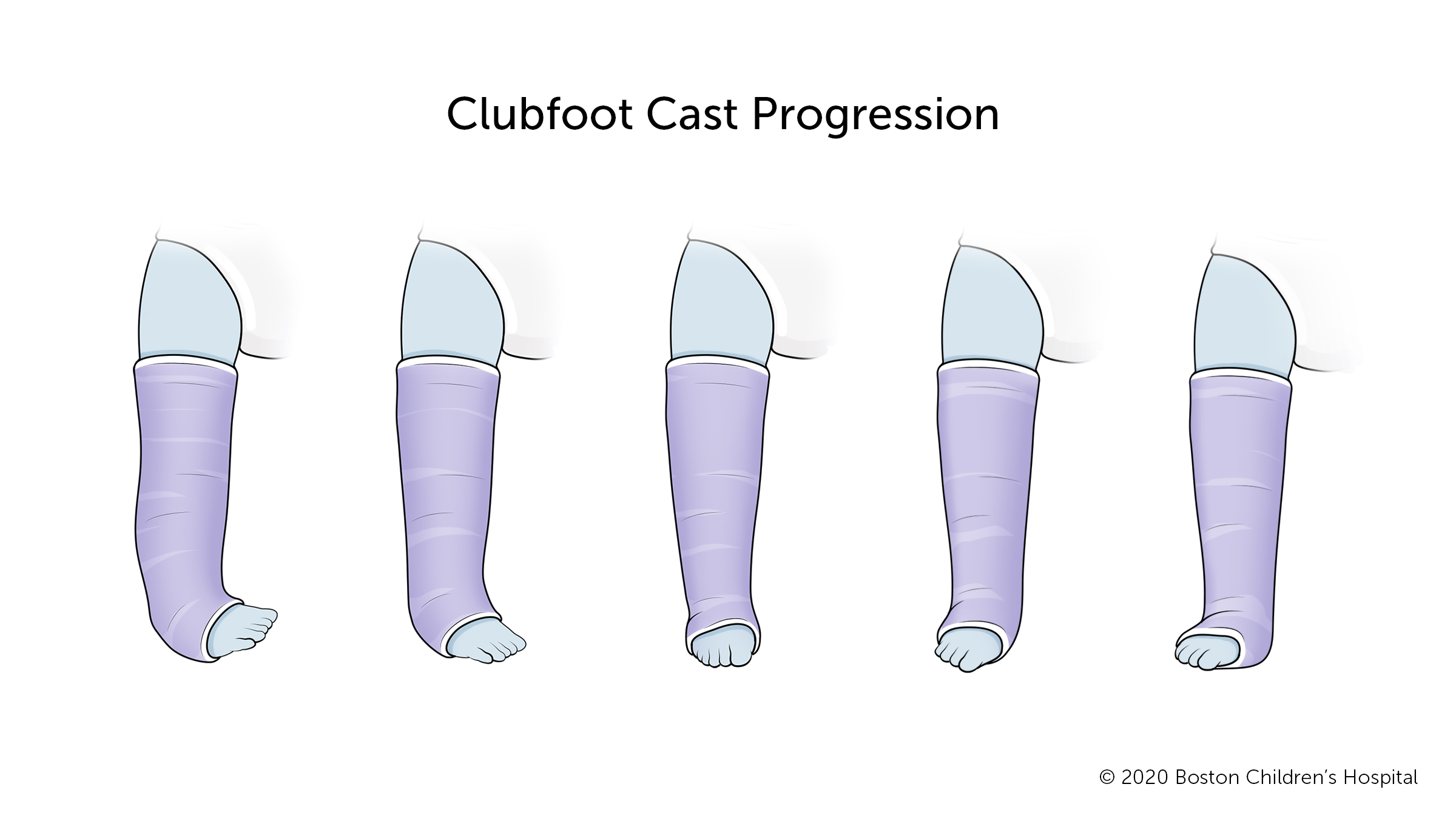Types of Casts | Cast Care & Maintenance
Casts are a common treatment for fractures. Casts are used to immobilize injured bones, promote healing, and reduce pain and swelling while the bone heals. They are sometimes put on an arm or leg after surgery to protect the bone and ensure it remains in proper alignment.
Applying a bone cast
Getting a cast put on is not painful. You and your child will be brought into the cast room by one of our cast technicians. The cast application will vary depending upon what type of cast your child will be receiving. Your cast technician will go over the specific details with you.

What are the steps of getting a bone cast?
- A stockinette will be placed against the skin to protect it. This will become the cuff around the edges of the cast and will help to keep the padding intact.
- A layer of soft cotton padding will be wrapped around the stockinette. This will help keep the injured limb more comfortable inside the cast.
- A layer of fiberglass or plaster cast material will go around the cotton padding. When it dries, the fiberglass or plaster forms a hard, outer shell. This will protect and stabilize the bone while it heals. At this stage, the cast will be white.
- Finally, if your child has a fiberglass cast, they will be able to choose a color for final layer of the cast.
Your child will feel warmth as the fiberglass gets hard. It will not burn but should feel warm like a bath. This reaction will last about 10 minutes. It will take less than five to 10 minutes for the cast to completely set.
Can my child get a waterproof cast?
This is a good thing to ask about during your appointment. A waterproof cast might or might not be the right option for your child. If your child is eligible for a waterproof cast, they will need to wait at least one to two weeks before switching to a waterproof cast. This is because the tissues around a broken bone often swell at first. Many insurance companies do not cover the cost for a waterproof cast. If not, you may purchase a special waterproof sleeve to protect your child’s plaster or fiberglass cast.
Waterproof casts are ideal for baths, showers, and swimming pools. Your child should not wear their waterproof cast in the ocean, a hot tub, at the beach, or in a pond. Sand and debris can get inside the cast and irritate the skin.
Waterproof casts must get completely submerged in water daily to keep the lining of the cast in good condition. When the time comes, make sure an experienced clinician or technician removes your child’s waterproof cast.
Moving around while in a cast
If your child has a broken leg and has been instructed not to bear weight on their cast, there are many kinds of assistive devices to help them get around:
- crutches
- walkers
- wagons
- wheelchairs
- reclining wheelchairs
- kneeling scooters (appropriate for adolescents)
Removing a cast
Cast removal can be a scary thing for children. The cast technician will use an oscillating saw to remove the cast. An oscillating saw does not spin, it rapidly vibrates back and forth. The cast saw makes a lot noise. Some children are afraid of this at first, but start to laugh when they feel the vibration of the saw cutting through the cast material.
It is very important to tell your cast technician if your child has picked out some of the padding or placed anything inside the cast.

Caring for your leg or arm cast
Once your child has been fitted with a cast there are important guidelines to follow. Our cast technicians will go over these instructions with you and your child.
Cast care
- Keep the cast clean and dry. The best way to keep a cast dry when bathing is to put two bags over the cast. Place a bag on the cast, then apply a towel around the top of the cast with tape, followed by the second bag. This does not make the cast waterproof, but it will help protect it from splashing. If the cast does get splashed on, you can use a hairdryer on cool or low to dry it. If the cast gets very wet you will need to have the cast changed within 24 hours, as the moisture can damage the skin underneath the cast.
- Check the cast often for cracks or breaks. If you find one, contact your child’s doctor.
- Cover the cast while your child is eating to prevent food spills and crumbs from entering the cast.
Skin care with a cast
- Do not scratch the skin under the cast by inserting objects or fingers inside the cast.
- Do not put small toys or objects inside the cast.
- Avoid sand, dirt, and mulch. Loose particles may work their way into the cast and irritate your child’s skin.
- Do not put powder or rub lotion inside the cast.
Keeping your child comfortable
- You can use a hair dryer on a cool setting to blow air under the cast and cool down hot, itchy skin, but never blow warm or hot air into the cast.
- Elevate the cast above heart level to decrease swelling.
- Encourage your child to move their fingers or toes to promote circulation.
- If the cast irritates your child’s skin, contact your pediatrician or clinic. They may be able to suggest measures you can take at home to protect your child’s skin.
Caring for a body cast
Older children with body casts may need to use a bedpan or urinal in order to go to the bathroom. The following tips will help keep the body cast clean and dry and prevent skin irritation:
- Keep the genital area as clean and dry as possible.
- Use a diaper or sanitary napkin around the genital area to prevent leakage or splashing of urine.
- Place toilet paper inside the bedpan to prevent urine from splashing onto the cast or bed.
What should I do if my child’s cast has gotten wet?
If your child’s cast has gotten wet, please contact us immediately at 617-355-6021.
Unless your child has a waterproof cast, a wet cast can lead to complications and needs immediate attention.
A nurse will decide if your child needs to be seen that day, or the next. If your child’s fiberglass or plaster cast has gotten wet, your child may need to be seen that day.
If your child’s cast gets wet after normal business hours, please contact the orthopedic physician on call through the page operator at 617-355-6000. Your child may need to be seen in the emergency department to have their cast changed.
When to call your child's doctor
Contact your child's doctor or health care provider if your child develops one or more of the following symptoms
- fever greater than 101 degrees Fahrenheit
- increased pain
- increased swelling above or below the cast
- complaints of numbness or tingling
- drainage or foul odor from the cast
- cool or cold fingers or toes

